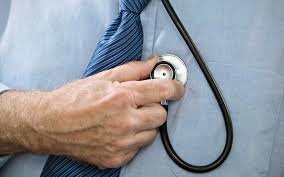What are some possible early warning signs of osteoporosis?
Osteoporosis is a condition that causes brittle bones. Patients also experience bone tissue loss in addition to a decline in bone mass. People 65 and older, especially women, frequently experience it. Additionally, osteoporosis is almost symptomless. The most typical symptom of the disease, fracture, is experienced by the majority of people before they are aware that they have it.
You might be shocked by how easily a minor fall or bump can break bones due to osteoporosis’ loss of bone density. Your arm could sustain a minor break, or your spine could break, altering the course of your life.
Osteoporosis-related fractures are more expensive and time-consuming than other types of breaks, according to a 2016 study from East Virginia Medical School. As you get older, it’s critical to be aware of osteoporosis so that you can take precautions against it. Although you won’t feel it happening, you will undoubtedly feel the unexpected fracture.
The seven symptoms listed below could indicate osteoporosis. Pay close attention to point #6 because it relates to the possibility of brittle bones in a way that many people do not.
1. Age
It’s time to start discussing osteoporosis risk factors with your doctor once you turn 50. Supplementing your diet with foods like more calcium may be advised.
Annual screenings for men and women over the age of 70 and 65, respectively, are recommended. In addition, routine osteoporosis testing is required for anyone over 50 who has experienced a fracture.
2. Particular Drugs
Other than age, certain lifestyle choices can also have an impact on osteoporosis. The risk is also increased by drugs like steroids, injectable contraceptives, and some cancer treatments. Although common medications for heartburn and depression may increase your risk of osteoporosis, this does not mean you should stop taking them.
Consult your physician. He or she might suggest a different supplement to help maintain the health of your bones and counteract the effects of the main medication.
3. A Height Loss
Age-related changes in height and posture, which can indicate osteoporosis, are common. A height loss of two or more inches or a new curve in the spine are both noteworthy changes.
These alterations may indicate that your spine has been impacted by osteoporosis. Ask for a height measurement at each wellness checkup after the age of 50.
4. A lack of vitamin D
Because it facilitates the body’s absorption of calcium, vitamin D is essential for bone health. Additionally, recent studies have demonstrated the value of vitamin D in preventing cancer, cancerous tumors, and cognitive decline. Muscle weakness or bone pain could be signs of a deficiency, but these signs are frequently mild.
Since the body only produces vitamin D when exposed to sunlight, many people experience deficiencies in the winter or if they reside in northern latitudes. Animal-based foods like egg yolks, fish and fish oils, fortified milk, and beef liver are the main sources of vitamin D in food. A strict vegan diet increases the risk of vitamin D deficiency.
5. Serum Calcium Or Alkaline Phosphatase Levels That Are Extremely High
Your doctor may use a variety of tests to ascertain whether you are losing bone density, including this one. It can reveal whether certain bone cancers are present and whether a vitamin D deficiency may be affecting your bones.
Additionally, it can be used to rule out Paget’s disease, a condition that interferes with bone growth. This examination is frequently used to look for symptoms of liver disease.
6. Muscle or joint pain
Since osteoporosis develops slowly, you won’t likely feel any pain until the disease has progressed. However, there are some osteoporosis side effects that can be uncomfortable. In the course of daily life, stress fractures and minor bone cracks can develop, which can result in pain.
You’ll probably feel back pain as you start to lose height and your vertebrae start to compress closer together. Additionally, a small rib fracture could put pressure on a nerve by pressing it up against a rib. Weak muscles caused by loose connections with the bones that support them are another sign of osteoporosis. This may manifest as difficulty rising from a chair without using your arms as a push.
7. Fracture
Unfortunately, a fracture is frequently the first indication that you may have osteoporosis. In actuality, the most prevalent early symptom is fracture. Even a small impact can fracture bones that have thinned and become brittle. In some cases, people don’t realize they have broken a bone because the impact that caused the injury was so slight until they are sent to the doctor by persistent pain.
Immediately following an impact or a fall, pain and swelling may indicate a fragility-related fracture. Usually, this is pretty obvious. Another indication is if it seems like a part of your body is out of alignment. Even if you can’t recall a specific incident that caused it, pain that lasts for several weeks, especially in the back, may also be a sign of a fracture.
Conclusion
Aches and pains are common with aging but are not always an indication of osteoporosis. But you should still discuss it with your doctor. Only 1 in 5 women in a study of over 47,000 women who suffered a fragility fracture were aware of their osteoporosis prior to the injury. Surprisingly, very few of the women continued to take action to stop additional fractures.
No matter your age, you can lower your risk of developing osteoporosis by increasing your calcium and vitamin D intake, quitting smoking, abstaining from excessive alcohol use, and engaging in regular weight-bearing exercise. It’s best to develop these habits by the age of 30 for the greatest protection. It’s never too late to change things, even if you missed that boat. Your ability to age comfortably depends on it.




